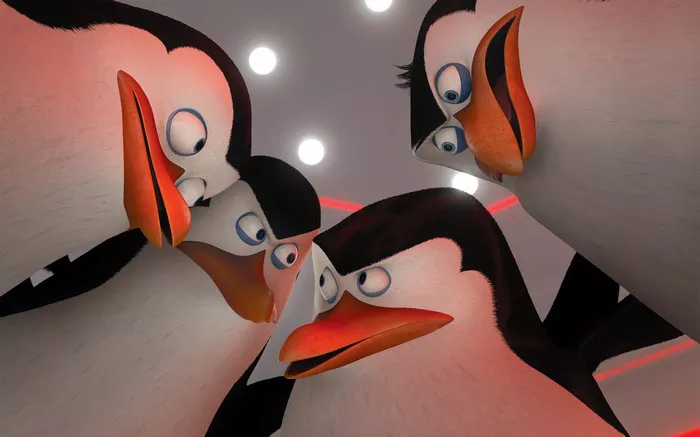The Penguins of Madagascar” is an animated television series that has captured the hearts of audiences around the globe. A spin-off from the successful “Madagascar” film series produced by DreamWorks Animation, the show revolves around the adventures of four penguins: Skipper, Kowalski, Rico, and Private. The second season, which aired from 2010 to 2012, expanded upon the inaugural season’s success, delivering a mix of humor, action, and intriguing plot developments that appealed to both children and adults. This article provides an in-depth analysis of Season 2, exploring its themes, character development, animation quality, and overall impact.
The Penguins of Madagascar Season 2
Overview and Episode Structure:
Season 2 of “The Penguins of Madagascar” consists of 68 episodes, each roughly 11 minutes long. The season continues to follow the escapades of the penguin quartet in their home at the Central Park Zoo in New York City. Each episode encapsulates a self-contained narrative, although several thematic and narrative threads run throughout the season, providing continuity and depth to the characters and their adventures.
Themes and Motifs:
Season 2 delves into themes of teamwork, friendship, and the importance of intelligence and resourcefulness. The penguins often find themselves in various predicaments from which they must extricate themselves through clever tactics and cooperative efforts. The season also introduces new characters and expands on the penguins’ interactions with other zoo animals, enriching the series’ dynamic.
Character Development and Dynamics
The Penguins:
Skipper: The leader of the group, Skipper is portrayed with a more pronounced depth of leadership and strategic mind. Season 2 often puts him in situations where his leadership is tested, revealing his vulnerabilities and strengths.
Kowalski: The brains of the team, Kowalski’s inventions and scientific knowledge continue to play a central role in the storyline. This season explores the consequences of his inventions, blending humor with lessons on responsibility.
Rico: Known for his love of explosives and ability to regurgitate useful items, Rico is developed more comedically this season, providing laughs but also moments of surprising tenderness.
Private: The youngest and most innocent of the group, Private’s character arc in Season 2 focuses on his growth from a naïve youngster to a more capable and decisive penguin, often highlighting his moral compass.
New and Returning Characters:
Season 2 introduces new characters such as the tuxedo-clad puffin, Hans, who serves as both a foil and a mirror to Skipper, providing insights into Skipper’s past. The return of Dr. Blowhole, the villainous dolphin, adds a layer of continuity and elevates the stakes of the narrative conflicts.
Key Episodes and Storylines
Standout Episodes:
“The Red Squirrel”: An episode that combines humor with a bit of espionage thriller parody. The penguins encounter what they believe to be a legendary spy, setting off a chain of comedic mishaps.
“Dr. Blowhole’s Revenge”: This episode features the return of Dr. Blowhole, marking a significant plot point in the series that blends action with dramatic elements, showcasing the series’ ability to handle more complex narratives.
Narrative Techniques:
The episodic nature of the series allows for a variety of storytelling techniques, including flashbacks, dream sequences, and even an unreliable narrator in some instances. This variety keeps the series fresh and engaging for viewers.
Animation and Visual Style
Advancements in Animation:
Season 2 shows noticeable improvements in animation quality compared to Season 1. The movements of the characters are smoother, and there is greater attention to background detail, which enhances the visual experience and helps to create a more immersive environment.
Artistic Influences:
The visual style of “The Penguins of Madagascar” owes much to the original “Madagascar” films, featuring vibrant colors and exaggerated character designs that emphasize comedic and expressive features. Season 2 continues this style but with refined animations that allow for more dynamic and fluid action sequences.
Critical Reception and Audience Impact
Critical Acclaim:
Season 2 received positive reviews from critics, who praised its witty writing, improved animation, and development of characters. It continued to appeal to a diverse audience range, maintaining strong viewership numbers among children and their families.
Fan Reception:
Fans of the series particularly appreciated the deeper character arcs and the introduction of new, engaging antagonists, which added layers to the show’s plot. Online forums and social media platforms featured robust discussions and fan theories about the episodes, indicating a highly engaged fanbase.
Conclusion: The Enduring Legacy of Season 2
The second season of “The Penguins of Madagascar” not only solidified the series as a standout animated show during its run but also reinforced the characters’ status as cultural icons within the DreamWorks Animation portfolio. By balancing complex storytelling with high-quality animation and humor, Season 2 contributed to the series’ lasting impact, setting a high standard for subsequent animated television series.
Season 2’s exploration of themes such as leadership, friendship, and the use of intellect over brute force offers valuable lessons for its audience. Moreover, its ability to maintain humor and lightheartedness while tackling these themes ensures that “The Penguins of Madagascar” remains a beloved series that resonates with viewers of all ages. The legacy of Season 2, in particular, can be seen in how it managed to enhance the characters and the world they inhabit, creating deeper connections with the audience and paving the way for future narratives in the “Madagascar” universe.

